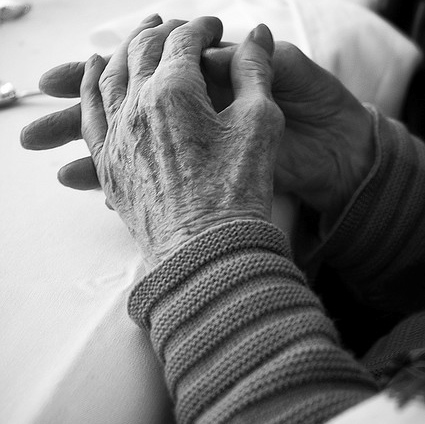
California’s support systems for older adults, the disabled, and their family caregivers have improved in recent years and now rank among the top ten states in the nation, according to a scorecard released Thursday.
Yet while the state came in ninth overall – with substantial improvements in many areas – its high ranking is due largely to one area in which it excels: a vast choice in long-term care settings and providers.
In most of the other five categories studied – quality of care, quality of life, support for family caregivers, and effective transitions between locations – California scored in the middle of the pack nationally. It tallied fourteenth for affordability and access.
The “Raising Expectations” scorecard was published by the AARP, the Commonwealth Fund and Long Beach-based The SCAN Foundation,* which focuses on aging with dignity. The scorecard compared data collected during an inaugural study in 2011.
In particular, California excelled in one sub-category: its safety net for low-income patients on Medi-Cal (the state’s version of Medicaid). The category is critical to the overall health of the long-term support network and a significant factor in the rankings.
The scorecard’s authors warned that even high-scoring states needed significant improvements to properly handle the aging Baby Boom generation, nearly 10,000 of whom turn 65 each day.
“In just 12 years, the leading edge of the Baby Boom Generation will enter its 80s, placing new demands on the (long term care) system,” says the report. “This generation, and those that follow, will have far fewer potential family caregivers to provide unpaid help.”
The scorecard is a key indicator in how well the aging, the disabled, and their caregivers will live their lives and perform their duties. It studied a variety of locations, including nursing homes, home-based care, assisted living facilities, adult day care, and other locations serving the elderly and disabled.
The costs of long-term care – both financial and social – are daunting.
Average home care costs are a whopping 82% of household income, according to The SCAN Foundation, with nursing homes costing, on average, more than double the median household income.
Another stress is the shortage of trained caregivers, which places strain on family members, many of whom must take time off work.
The report’s most critical recommendation?
“The need to move more quickly,” said Bruce Chernof, president and CEO of the foundation. “The status quo is by far the most expensive and least person-centered system out there.”
Leading the scorecard for a second time was Minnesota, which boasts a long history of home and community-based services that improve access and lower costs.
Generally, states that spend more on nursing home care scored lower than those that emphasized home and community-based services.
California has 11% of its nursing home residents with “low care needs” who could potentially be transitioned to cheaper alternatives. By contrast Maine – which leads the country in this area – has just 1%.
There were several bright spots highlighted in the report.
Nationally, California and 28 other states improved their family caregiving system, either through legislation or improved support systems for caregivers.
“This is astonishing,” said Susan Reinhard, AARP’s senior vice president for public policy.
There were two other areas of significant improvement nationally – although not in California.
– 24 states increased the percentage of spending aimed at home and community-based programs.
– 28 states improved their Aging and Disability Resource Centers, which provide comprehensive information on long-term care options. (California ranks #49 nationally)
The scorecard also outlined other important changes needed.
Many older adults are shuttled between locations, and smoothing this transition – or eliminating it – is an important factor in the future success of long-term support.
“This is an area we hope people really pay attention to,” said Reinhard.
Another area for improvement is expanding the role of home caregivers – either hired or family members – to perform tasks typically reserved for trained nurses, such as administering drugs, using glucometers for diabetes, or changing a colostomy bag. Of 16 measured nursing tasks, California law allows non-nurses to perform only two.
“(Caregiver) training needs to be consistent nationally,” said Chernof, who headed a 15-member bi-partisan panel on long-term care created by Congress, which released its recommendations last fall. “In California, you need more training to be a cosmetologist than to be a home care worker.”
Reinhard cited the continued need for robust, coordinated and creative long-term care solutions.
Besides Minnesota, she said leading states like Oregon and Washington offer lessons for the rest of the country.
“Leadership and vision make the difference.”
* NOTE: The SCAN Foundation is a sponsor of The California Health Report.





